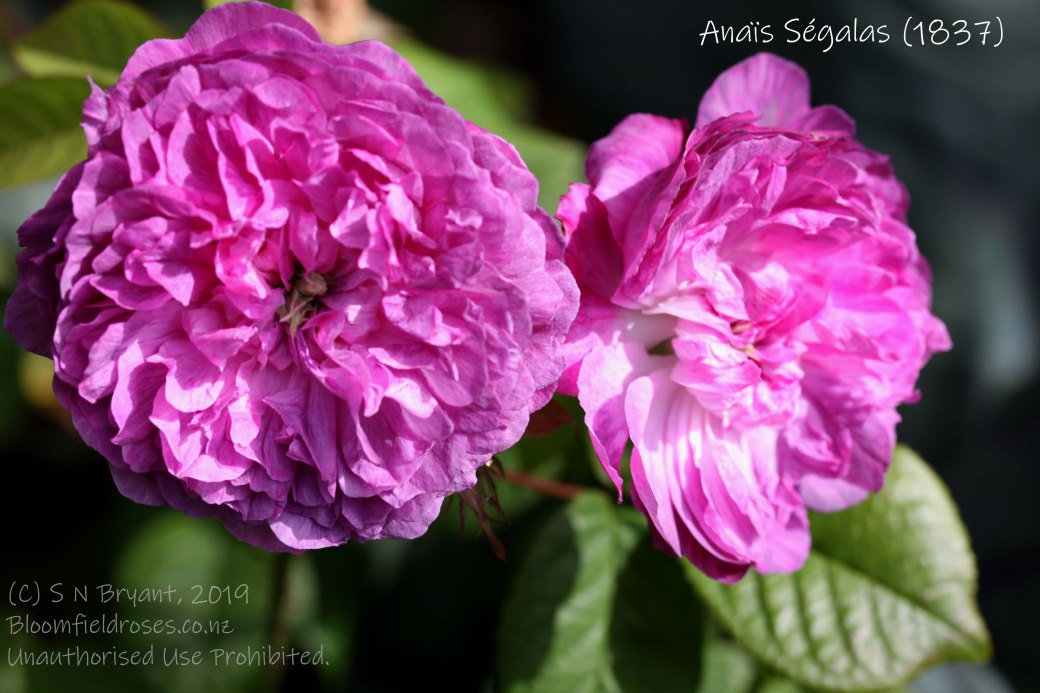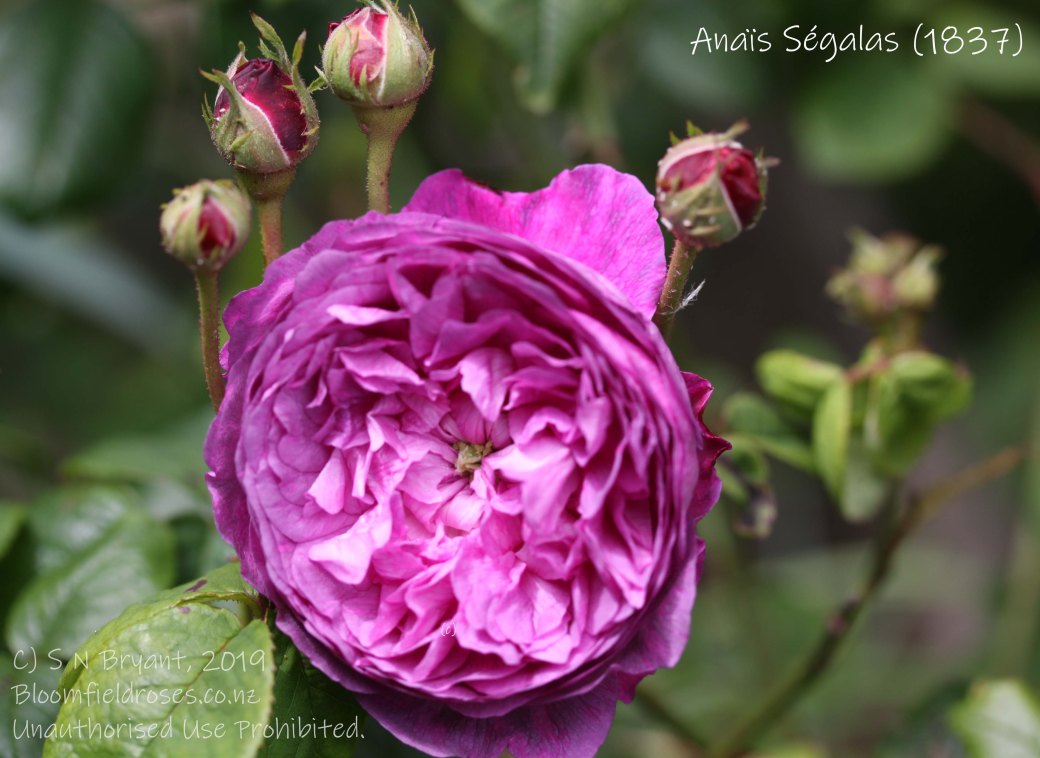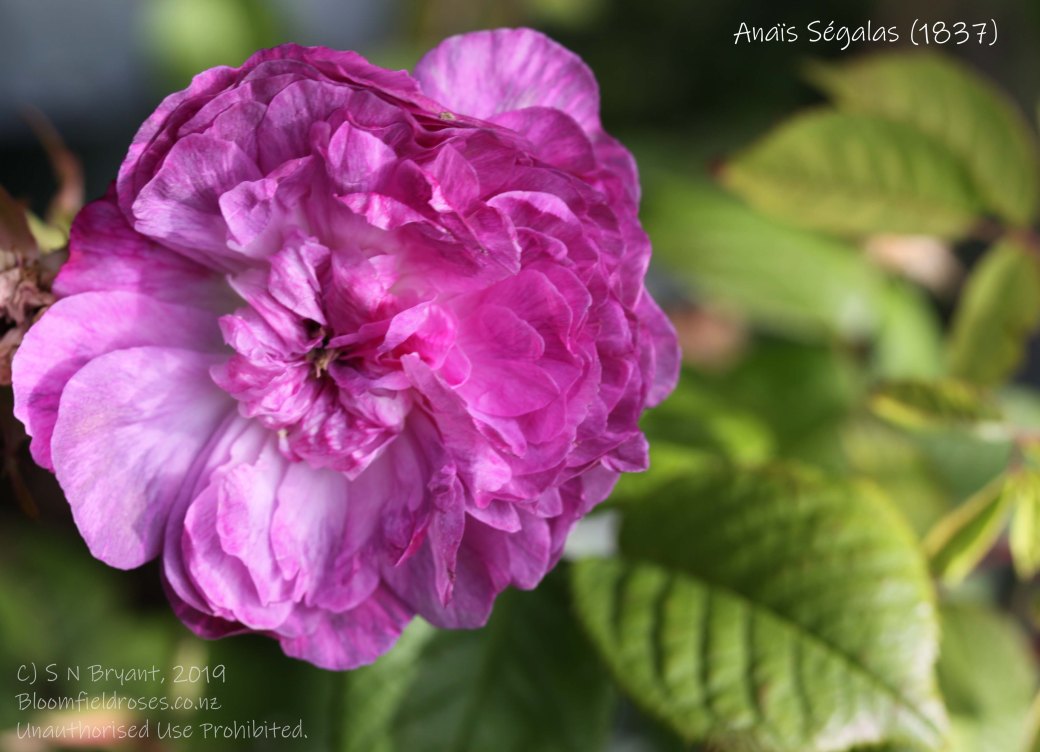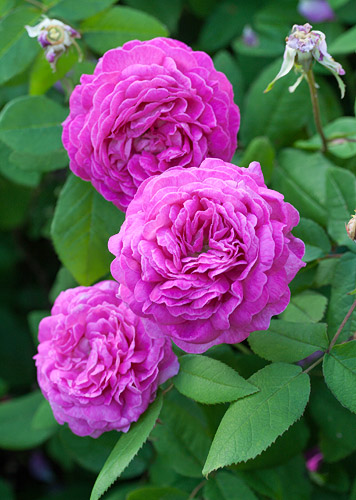
‘Anaïs Ségalas’ is one of the most popular and commonly found Gallica roses in New Zealand. This rose is believed to be brought to New Zealand by settlers in the mid-1800s. This rosy purple Gallica is still a commonly found rose in home gardens and old cemeteries in New Zealand. It is found in semi-wild condition throughout the country, growing in road sides. It must have either escaped from old gardens or growing on gardens that have been segmented by roads. Abundance of this rose in New Zealand could also have been due to its free suckering nature. The popularity of ‘Anaïs Ségalas’ as a memorial rose in New Zealand could have been due to its colours; Blue, being the colour of love in noble or divine sorrow, and Purple, being the colour of secondary mourning.

‘Anaïs Ségalas’ is a very beautiful, and fragrant rose with fat, round buds that open to rosy-mauve cupped blooms in late spring, borne mostly in small clusters. The blooms open to full, flat and perfectly round flowers with small incurved petals in the middle, surrounding a green button eye. The flowers quickly fade to rosy-lilac with a touch of blue and grey on petals due to aging. Although it is once blooming, this lovely rose produces abundance of blooms in every season. It is also a very hardy and disease resistant rose that grows up to a meter and tolerates poor soil. The dark leaves of ‘Anaïs Ségalas’ turn to rustic red in autumn and blends so perfectly well with other colourful foliage of the season.

Jean-Pierre Vibert bred ‘Anaïs Ségalas’ in France, in 1837. He named this rose for Anaïs Ségalas (1814-1895), a well-known poet in France, who, by the time, was just 23 years old, and had already published two collections of poetry.

European Anaïs Ségalas’
It is to note that the rose named as ‘Anaïs Ségalas’ in Australia and New Zealand is different from its European name sake by the colour as well as the form of its blooms and nearly absence of prickles. Although the true identity of this rose is confused, it is indeed a very beautiful rose, that is worth growing in every garden in New Zealand.